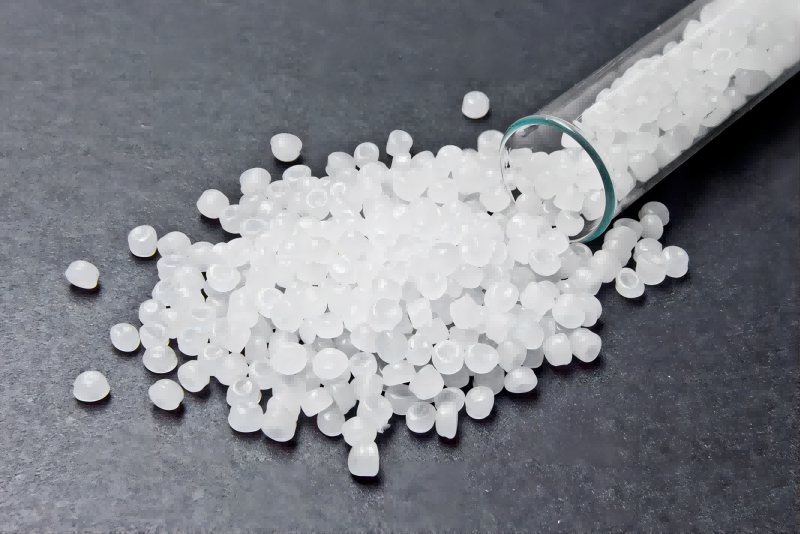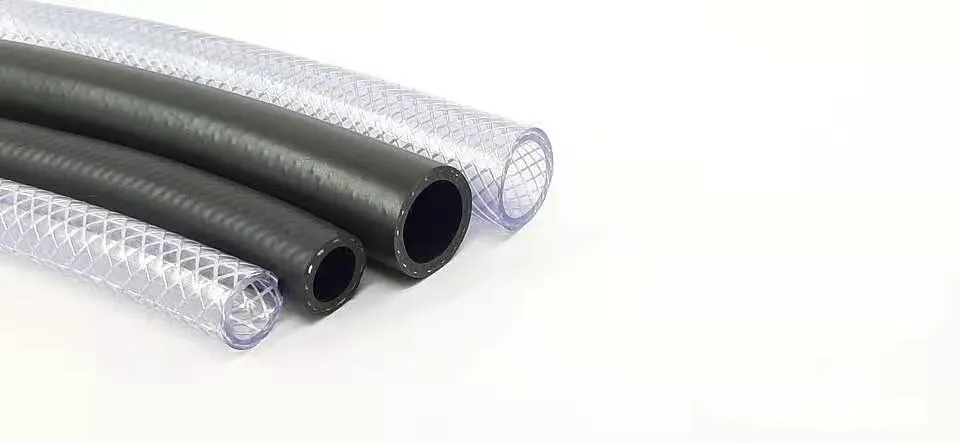Because of its unique qualities, nylon is frequently utilized in textiles, mechanical constructions, sports equipment, and electrical and electronic equipment. However, the demand and performance standards for nylon are gradually rising as a result of the miniaturization of vehicles, the high performance of electronic and electrical equipment, and the acceleration of the lightweight of mechanical equipment. The alteration of nylon is crucial for this reason.
Precautions for Modifying Nylon
1 .Setting the barrel temperature
Nylon is a crystalline polymer, thus it is clear what temperature it melts at. The performance of the nylon resin itself, the shape variables of the apparatus, and the quality of the end product are all influenced by the temperature of the cylinder chosen for injection molding of the nylon resin.
(2) Extremely high material temperatures can easily result in the discolouration, brittleness, and silver wire of the rubber components, whilst excessively low material temperatures can result in the material being extremely hard and perhaps damaging the screw and mold.
(3) The typical minimum melt temperatures for PA6 and PA66 are 220°C and 250°C, respectively. Due to nylon’s poor thermal durability, it is not recommended to keep it in the barrel at a high temperature for an extended period of time to avoid the material being discolored and turning yellow. Nylon also flows swiftly once the temperature surpasses its melting point because of its good fluidity.
2. Setting the mold temperature
(1) The mold temperature, which varies from 80 to 120°C, has some bearing on crystallinity and molding shrinkage rate.
Select materials with a high melting point, high crystallinity, increased wear resistance, hardness, and elastic modulus, reduced water absorption, increased product shrinkage during molding, and suitability for thick products;
Select materials with low mold temperatures, low crystallinity, high elongation, low shrinkage, and strong toughness for thin products with good transparency.
(2) It is advised to use a low temperature mold between 20 and 40 degrees Celsius if the wall thickness is larger than 3mm. Mold temperatures for materials reinforced with glass should be higher than 80°C.
(3) Heating is used to control molds that need high crystallinity or thin, difficult-to-form product walls, whereas cold water is typically used to control products that need a certain amount of flexibility.
3. The product’s wall thickness
The wall thickness of the product, which must be at least 0.8mm and often ranges from 1-3.2mm, affects how much it shrinks; the higher the wall thickness, the greater the shrinkage. Nylon has a flow length ratio of 150-200.
4. Retire
The vent groove should be kept below 0.025 since the overflow value of nylon resin is around 0.03mm.
5.Gate and runner
The gate aperture must not be smaller than 0.5t (where t is the plastic part’s thickness). The minimum gate diameter for submerged gates should be 0.75 mm.
6. Glass fiber filling variety
reducing the mold temperature, raising the injection pressure, and reducing the material temperature during the molding process of nylon will, to some degree, diminish the shrinkage rate of nylon, making the product more susceptible to deformation brought on by internal stress. For instance, PA66 shrinks between 1.5% and 2%, while PA6 shrinks between 1% and 1.5%. The shrinkage rate may be lowered to roughly 0.3% after adding glass fiber additives.
Practical knowledge teaches us that the shrinkage of nylon resin during molding decreases when more glass fiber is added. A surplus of glass fiber, however, will result in surface-floating fibers and poor compatibility. In general, 30% more is about as effective.

7. Recycling of materials
It is preferable to refrain from going above three times in order to prevent product discolouration or a dramatic decline in physical and mechanical attributes. In order to prevent process conditions from changing, the application amount should be kept below 25%. Additionally, the mixture of new and recycled materials needs to be dried.
8. Safety Guidelines
The feeding barrel should be heated before the nozzle temperature is activated while commencing the nylon resin. Avoid facing the nozzle hole while it is blocked to avoid hazard from the melt in the barrel being released unexpectedly as a result of pressure buildup.
9. Employing a release agent
Air bubbles and other flaws can occasionally be improved and removed with the use of a little amount of release agent. In order to prevent surface flaws on the product, the release agent for nylon goods can be made of zinc stearate, white oil, or other substances. It can also be combined into a paste for application.
The screw should be empty while shutting down to avoid twisting the screw during the subsequent manufacturing.
10.Post-processing
(1) Heat treatment is necessary once the product is created.
Common techniques The heat treatment temperature for mineral oil, glycerin, liquid paraffin, and other high-boiling liquids should be 10–20°C higher than the usage temperature, and the treatment period varies based on the product’s wall thickness.
If the thickness is between 3 and 20 degrees Celsius and less than 3mm, the thickness is between 10-15 minutes. The 6mm time for heat-treated items is 15 to 30 minutes, and they should be cooled gradually to room temperature to avoid the stress being regenerated in the products due to abrupt cooling.
(2) Humidity must be controlled once the product is created.
The humidity control treatment is mostly used on items that are exposed to high levels of ambient humidity. There are two techniques: the first uses boiling water to manage humidity, and the second uses a potassium acetate aqueous solution (the ratio of potassium acetate to water is 1.25:1, with a boiling point of 121°C).
The potassium acetate aqueous solution humidity control method takes longer and uses acetic acid at a treatment temperature of 80–100 °C. The boiling water humidity control method is straightforward as long as the product is placed in an environment with a humidity of 65%, allowing it to reach the equilibrium moisture absorption. When using the potassium aqueous solution humidity control technique, the processing time mostly relies on the product’s wall thickness. When the wall thickness is 1.5 mm, it takes around 2 hours, 3 mm, 8 hours, and 6 mm, 16 to 18 hours.
Case Studies
1.Nylon with glass fiber reinforcement
The mechanical characteristics, dimensional stability, heat resistance, and aging resistance of nylon are all greatly enhanced by the addition of 30% glass fiber, and the fatigue resistance is 2.5 times greater than that of unreinforced nylon. Glass fiber reinforced polyamide is molded similarly to unreinforced polyamide, but because the flow is poorer after reinforcement, the injection pressure and speed must be correspondingly adjusted, and the barrel temperature must be raised by 10 to 40 degrees Celsius. Follow mechanical engineers’ WeChat public accounts to have access to additional industry knowledge.
The mechanical characteristics and shrinkage rate of the glass fiber, which will be orientated along the flow direction during the injection molding process, will rise in the direction of orientation, causing distortion and warping of the product. As a result, while developing the mold, the gate’s position and form should be fair and allow for process improvement. After the product has been removed from the mold, place it in hot water to let it gently cool. Additionally, the wear and tear on the injection molding machine’s plasticizing components increases in direct proportion to the amount of glass fiber injected. The ideal screws and barrels to use are bimetallic.

intake manifold for an automobile
2. Nylon that resists flames
The majority of flame retardants, which are added to nylon, are easily broken down at high temperatures, emit acidic chemicals, and corrode metals. For example, flanges and gaskets require strong chrome plating. In terms of technology, attempt to regulate the barrel’s temperature to keep it from rising too high and the injection speed from rising too quickly to prevent product discolouration and a loss of mechanical qualities brought on by the rubber material’s breakdown at high temperatures.

Nitrile Auto Hose
3. nylon that is clear
It also possesses good stiffness, wear resistance, chemical resistance, surface hardness, and tensile and impact strength. It transmits light with a high efficiency comparable to optical glass. 300–315 °C is the processing temperature. Forming and processing must precisely adhere to Temperature control for the barrel. If the melt temperature is too high, deterioration will cause the product to change color. Too low of a temperature will result in inadequate plasticization, which will reduce the product’s clarity. The mold temperature should be as low as feasible since crystallization at higher mold temperatures would diminish the product’s clarity.
4.weather resistant nylon
The self-lubricating qualities of nylon and wear to metal are substantially improved by the inclusion of carbon black and other UV-absorbing additives, which will have an impact on the blanking and wear portions during molding.
따라서 내마모성이 뛰어나고 강력한 이송 능력을 갖춘 나사, 배럴, 고무 헤드, 링 및 개스킷을 조합하여 사용해야 합니다.











